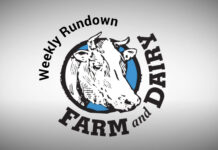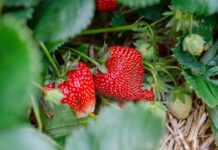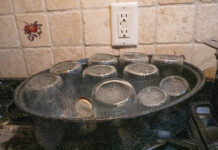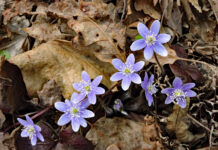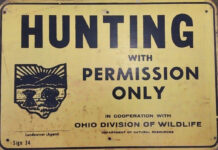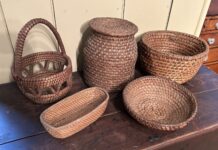With fall approaching, though it doesn’t seem like it, weeds are more noticeable here. In southeastern Ohio, we are extremely dry with very little to no grass left in the pastures, and the weeds more noticeable.
In Morgan County, the weeds that I have been getting the most questions about are spotted knapweed, hemp dogbane, cocklebur and johnson grass. Some other noticeable weeds that I am seeing as well are ironweed, Canada thistle, horsenettle, bedstraw and others. On the family farm, we are seeing a newer weed, small carpetgrass, that I haven’t seen before until last fall. We just started to see it come up around mid-August in the field where we feed most of our hay during the winter.
Why are we seeing more and more weeds show up? I remember when ironweed used to be the biggest problem weed on the farm, now it seems like a weed that we are willing to live with as compared to some of the other newer weeds like cocklebur or spotted knapweed. Some of the reasons as to why we are seeing these weeds pop up and notice more and more of them can be caused by ground disturbance — do to winter feeding or heavy rainfall — overgrazing, having a weak stand of forage in your pasture, drought conditions and where we source some of our feeds from to feed our livestock.
What can we do to control these different weeds that we are seeing? One of the best things is management of these areas. Here in Morgan County, and many of the surrounding counties as well, we are in a severe drought, according to the U.S. Drought Monitor.
Right now, we are noticing weeds more because that is what is left in the fields, and this could lead to more weed problems in the future. This can happen in many different ways. First, it can lead to overgrazing of pastures because we as farmers are trying to stretch everything we can out of the pastures. Overgrazing can lead to more weeds showing up in pastures because of the recovery time that it takes for forages to fully recover to be ready to graze again.
Some forages, like orchard grass, could be grazed right out of a pasture and weeds can easily take their place, due to the pasture not having a long enough rest period. But, if you are rotationally grazing your pastures in drought conditions, you can overgraze your pastures. With grass not growing back fast, more drought-tolerant weeds will start to show up and out-compete the desired forages that you have in that pasture. It is hard to say how to manage it because everyone’s situation is different. If you are in a continuous grazing system, then the recommendation is to try rotational grazing, to extend your pastures timeline.
But when you are in a drought and are rotationally grazing, then the recommendation is to graze until you need to start supplementing feed. Once the drought is over, then you go in and see how weak your forage stand has become and plan from there, from anything as simple as frost seeding to a complete pasture renovation. Weak stands can also lead to more weeds even when you are receiving adequate rainfall.
Ground disturbance is prime time for weeds, as some can be established quickly, and ground disturbance can happen very easily. The new weed that we are seeing on the farm, small carpetgrass, is in the same place where we feed our hay in the wintertime where it gets muddy, and the ground gets disturbed very easily.
The way that you could manage this in times when the ground can easily be disturbed is to feed on a heavy-use pad. Though that may not be available to all, you still have some options like moving where you feed your hay around to different places and not having the water and/ or mineral all in the same place so that the livestock will move around to different places instead of staying in one spot. You could also have a sacrifice lot that is easy to get to and reseed in the spring.
We have also seen many different weeds move in from places where we source the supplemental feed that we can’t grow. On our farm, we believe cocklebur came in when we had to feed corn to our cattle, due to not having enough hay, and we supplemented with some corn to stretch out our hay. Be aware that the supplement feed that you buy like hay or corn can have weed seed in it and can cause the spread of new weeds on your farm.
Contact your local extension office for a more detailed strategy on managing weeds.


